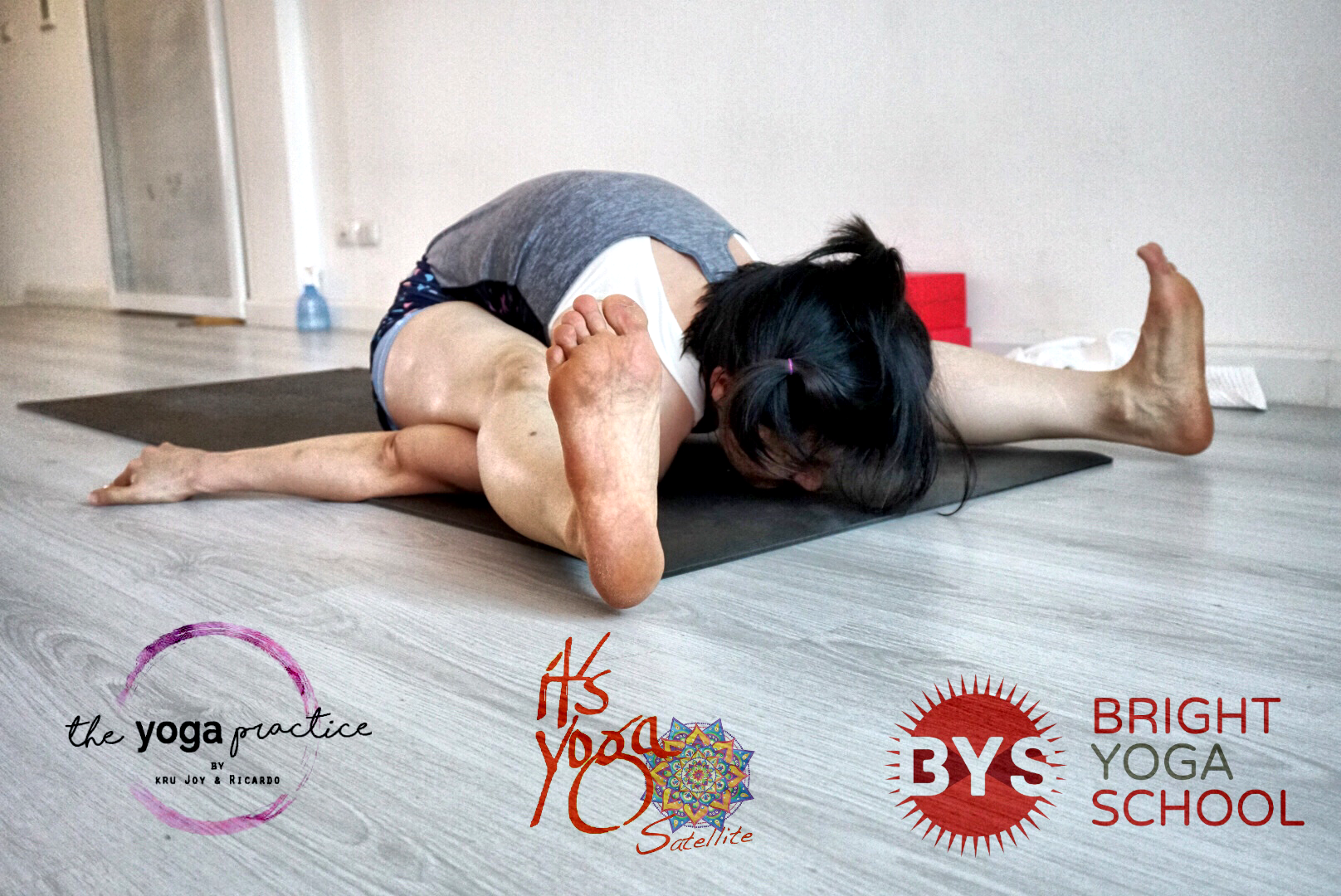Kurmasana or Tortoise Pose is practiced after Bhujapidasana in the Ashtanga Vinyasa sequence. This asana requires a lot of flexibility on the hamstrings as it demands a deep external rotation on the hips, as well as strong activation of the core muscles.
As you can see in the final version of the posture, your heels are supposed to lift off the floor.
There are some postures that can help you to get deeper in Kurmasana such as Prasarita Padottanasana A and Marichyasana A-D, to name a few.
When you practice Prasarita Padottanasana A, keep your hands active as they touch the floor; however, fold forward by using your core muscles and the activation on your quadriceps more than your hands – this will allow you to access to deeper levels of flexibility in the posterior part of your body, which are the groups of muscles you need to work on opening before you can get into Kurmasana.
With regards to Marichyasana A-D – in A and B, as you bind, reach lower on your shinbone and work on the inner rotation of the shoulder of the binding arm. This is the same type of rotation you will use in Kurmasana, and later on in Supta Kurmasana.
For Marichyasana C and D: In the C variation, grounding the hip of the bending leg will assist you in opening the hips muscles that will allow you to deeply externally rotate your legs. In the D variation, when you bind, reduce the gap between the armpit and the shinbone and work on lowering the sitting bone of the bent knee toward the heel, as this will open the hip rotator muscles even deeper.
As you can see every single asana, will allow you to build the foundation for whatever posture is coming next. Keep in mind to always practice with awareness from the beginning until the end of the sequence.
Do you Want to learn more?
Join us in our Daily Mysore classes or Yoga Teacher Trainings in Thailand and Bali, Indonesia
